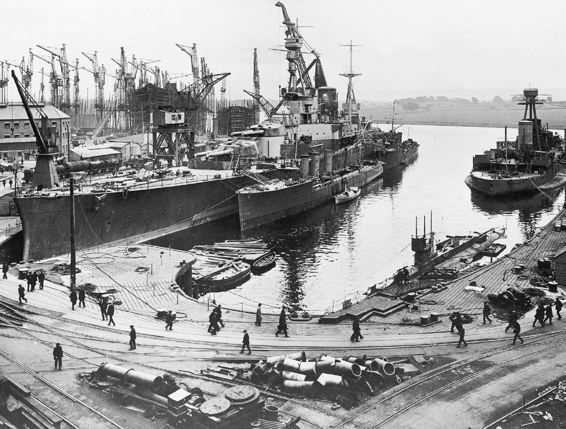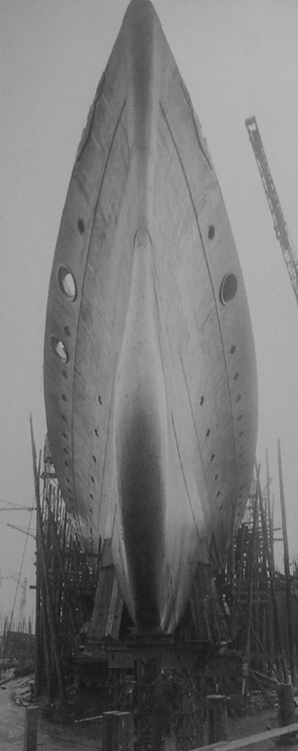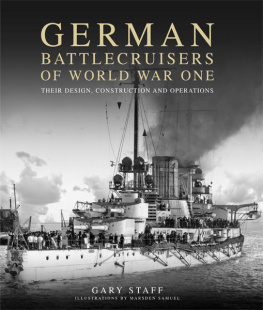Backer - British Battlecruisers of the Second World War
Here you can read online Backer - British Battlecruisers of the Second World War full text of the book (entire story) in english for free. Download pdf and epub, get meaning, cover and reviews about this ebook. year: 2013, publisher: Seaforth Publishing, genre: Non-fiction. Description of the work, (preface) as well as reviews are available. Best literature library LitArk.com created for fans of good reading and offers a wide selection of genres:
Romance novel
Science fiction
Adventure
Detective
Science
History
Home and family
Prose
Art
Politics
Computer
Non-fiction
Religion
Business
Children
Humor
Choose a favorite category and find really read worthwhile books. Enjoy immersion in the world of imagination, feel the emotions of the characters or learn something new for yourself, make an fascinating discovery.
- Book:British Battlecruisers of the Second World War
- Author:
- Publisher:Seaforth Publishing
- Genre:
- Year:2013
- Rating:4 / 5
- Favourites:Add to favourites
- Your mark:
- 80
- 1
- 2
- 3
- 4
- 5
British Battlecruisers of the Second World War: summary, description and annotation
We offer to read an annotation, description, summary or preface (depends on what the author of the book "British Battlecruisers of the Second World War" wrote himself). If you haven't found the necessary information about the book — write in the comments, we will try to find it.
Backer: author's other books
Who wrote British Battlecruisers of the Second World War? Find out the surname, the name of the author of the book and a list of all author's works by series.
British Battlecruisers of the Second World War — read online for free the complete book (whole text) full work
Below is the text of the book, divided by pages. System saving the place of the last page read, allows you to conveniently read the book "British Battlecruisers of the Second World War" online for free, without having to search again every time where you left off. Put a bookmark, and you can go to the page where you finished reading at any time.
Font size:
Interval:
Bookmark:
Copyright Seaforth Publishing 2007
First published in Great Britain in 2007 by
Seaforth Publishing
An imprint of Pen & Sword Books Ltd
47 Church Street
Barnsley
S Yorkshire S70 2AS
www.pen-and-sword.co.uk
And in the United States of America by
Classic Warships Publishing,
PO Box 57591, Tucson, Arizona 85732
www.classicwarships.com
The publishers would like to thank D K
Brown and John Roberts for help with
illustration.
British Library Cataloguing in Publication Data
Backer, Steve
British battlecruisers of the Second
World War.
(ShipCraft)
1. Warships - Models
I. Title II. Richardson, George
623.8'20153
ISBN-13: 9781844156986
PAPERBACK ISBN: 978-1-84415-698-6
PDF ISBN: 978-1-47382-945-9
EPUB ISBN: 978-1-47382-670-0
PRC ISBN: 978-1-47382-626-7
All rights reserved. No part of this publication
may be reproduced or transmitted in any form or
by any means, electronic or mechanical,
including photocopying, recording, or any
information storage and retrieval system, without
either prior permission in writing from the
publisher or a licence permitting restricted
copying.
Typeset and designed by Sally Geeve
Printed and bound in China through Printworks
International Ltd

Contents

Design
A dmiral John A Jackie Fisher is widely given credit for inspiring not only the all-big-gun battleship HMS Dreadnought, but also the first battlecruiser, HMS Invincible. On 21 October 1904 Jackie Fisher was appointed First Sea Lord of the Admiralty and in this position he did not wait long to exercise his influence. On 22 December 1904 a Committee on Design was appointed to select the features of new battleship and armoured cruiser designs. With both types, the results were spectacular and broke from the gradual evolution of the types that had preceded them. The first design contemplated was for the battleship and the result was the famous Dreadnought, with an all-big-gun layout and turbine propulsion that produced 21kts, three full knots faster than the preceding design. Fishers emphasis was always on hitting power and speed and the second type design contemplated by the Committee, emphasised those two aspects of warship construction at the expense of the third, armour.
The Committee was also to consider designs for a new armoured cruiser, and from January to March 1905 looked at both the battleship and armoured cruiser designs at the same time. Designs came from two sources. One batch were the collaborative efforts of Fisher and Gard (Chief Constructor at Malta Dockyard), who had been tinkering with new designs since 1902 when Fisher was C-in-C Mediterranean. The second batch came from the Royal Navy Constructor, Philip Watts (DNC) and his assistant, J H Narbeth. Watts was a traditionalist and greatly favoured the 9.2in gun on armoured cruisers, and much preferred the mixed gun arrangement of pre-dreadnought battleship designs and the 9.2in/7.5in mixed battery of the Minotaur class armoured cruiser. However, Narbeth was excited by Fishers vision of an all-big-gun battleship and matching armoured cruiser. Before a design could be selected, the mission for the ship had to be defined, and there were a number of considerations. The new ship had to be fast enough and strong enough to hunt down enemy commerce destruction cruisers/raiders. The previous classes of armoured cruisers were too slow to catch German liners converted to armed merchant cruisers, and unprotected scout cruisers would be too weak to handle a well-armed merchant cruiser. The Committee also had to consider foreign construction. They already knew of a Japanese cruiser design mounting four 12in guns with twelve 6in guns. Clearly a revamped Minotaur could not compete against that design. The new design also had main fleet roles: it had to be capable of supporting smaller cruisers and of pushing in an enemy scouting screen, thereby providing reconnaissance while removing the eyes of the enemys fleet. In a general fleet action it was considered desirable that the new ship should be fast enough to cross the T of the enemy line and be able to pick off stragglers. In both cases it was not envisioned that the new design would face enemy battleships on a one to one basis but rather to use their great speed to concentrate on a small portion of the enemy fleet and overwhelm it.

Repulse fitting out.
Narbeth prepared some sketches for a new battleship of 21kts and a new armoured cruiser mounting all 12in heavy guns with a speed of 25kts. This was far too radical for Watts, who vetoed the presentation of Narbeths designs to the Committee on several occasions, but eventually gave way to humour his assistant. Fisher fell in love with the Narbeth designs and the battleship design came to be HMS Dreadnought and the armoured cruiser design of HMS Invincible. The Invincible design was an even bigger leap in size and capability over the preceding Minotaur design than the Dreadnought was over the preceding Lord Nelson class. Speed jumped to 25kts but for the first time the armoured cruiser carried the same main armament calibre as the contemporary battleship. This is a much greater increase in power than would have occurred with a cruiser version analogous with the Dreadnought, which would have been armed with a uniform 9.2in gun armament. That is exactly what Fisher put out. The cover story was that the Invincible design was armed with all 9.2in guns and as a consequence the German navy developed the Blcher with a uniform armament of 8.1in guns. However, the new design might be faster, with much greater striking power, but it still had the same 6in armour belt of the earlier armoured cruiser designs.

A dramatic view of the fine lines of the battlecruiser: the forefoot of Repulse.
At first the new Invincibles were called armoured cruisers but they were of such greater power that a new type name had to be coined. They were then called dreadnought-cruisers and finally the name battlecruisers was selected. The second class of battlecruisers, the Indefatigable class, were little more than a stretched version of the Invincible, but then there was a big leap in capabilities. The Lion class, which along with HMS Tiger, would be known as the Splendid Cats, were the largest warships in the world when built. They were contemporaries with the Orion class battleship, which had reintroduced the 13.5in gun into the Royal Navy. The increase in size and capabilities was primarily driven by the worsening world situation, with Germany building a substantial fleet in competition with Great Britain, a situation that forced British politicians to countenance such hugely expensive designs. All three key aspects of warship design increased with the Lion. The Royal Navy 13.5in gun was a magnificent piece of ordnance, with much greater striking power than the 12in weapon; the machinery plant was increased and speed jumped to 26-27kts; and most remarkably there was a 50 per cent increase in the maximum width of the armour belt.
Next pageFont size:
Interval:
Bookmark:
Similar books «British Battlecruisers of the Second World War»
Look at similar books to British Battlecruisers of the Second World War. We have selected literature similar in name and meaning in the hope of providing readers with more options to find new, interesting, not yet read works.
Discussion, reviews of the book British Battlecruisers of the Second World War and just readers' own opinions. Leave your comments, write what you think about the work, its meaning or the main characters. Specify what exactly you liked and what you didn't like, and why you think so.













